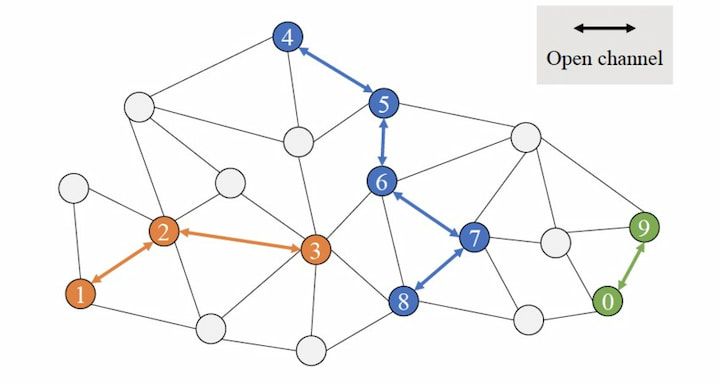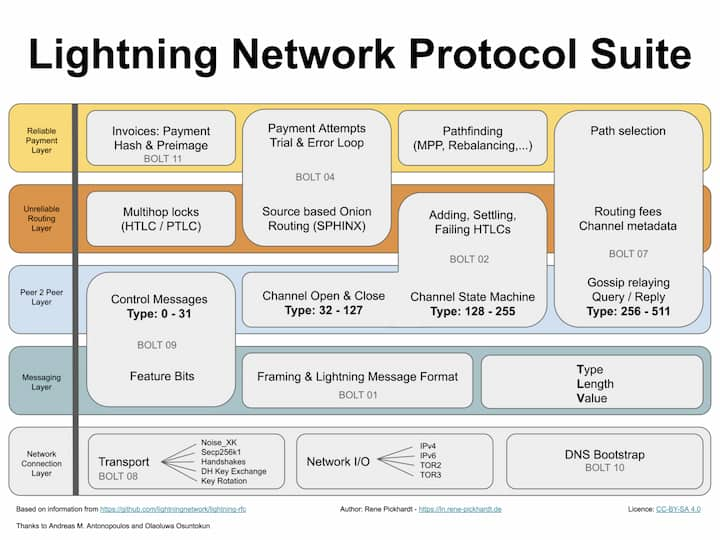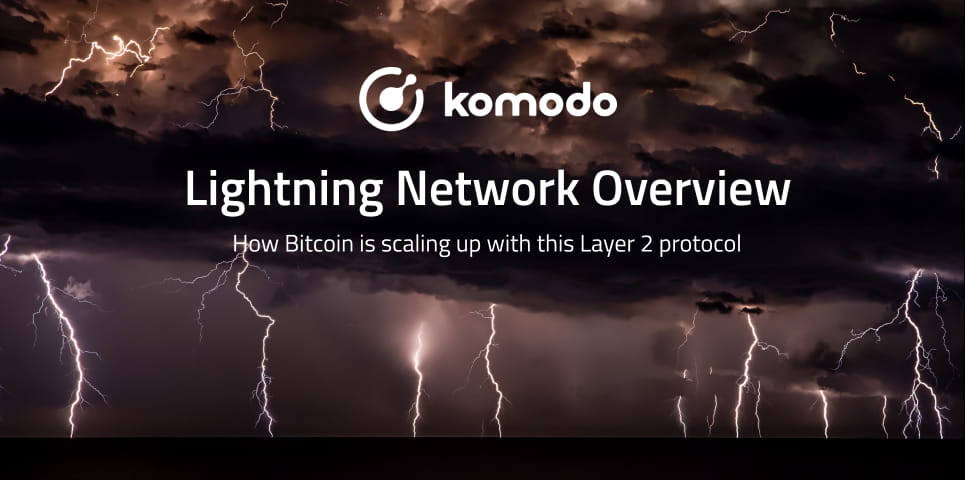Lightning Network is helping resolve Bitcoin's scalability issues by offering a way to send transactions in less time with lower fees.
It’s no secret that Bitcoin struggles with scalability issues. The network is often congested, not to mention it has highly fluctuating transaction fees. Even with these issues, Bitcoin is by far the biggest cryptocurrency in the world by market cap. As crypto becomes more accessible, start to use Bitcoin and get frustrated, then seek an alternative network that offers faster and cheaper transactions.
However, developers are on a mission, evaluating various ideas and protocols to improve the overall Bitcoin experience. The project with the most extensive activity in this sector so far is the Lightning Network.
What is the Lightning Network?
The Lightning Network is an off-chain, layer 2 protocol designed to solve scalability issues within the Bitcoin protocol. Layer 2 means the network exists “on top” of the Bitcoin blockchain, but is still tied to the mainnet. This off-chain approach helps decongest the mainnet, processing transactions elsewhere to save on costs and time.
Specifically, Lightning Network generates off-chain channels between two parties. Once two parties establish a channel, they can then instantly send and receive payments with minimal transaction fees. When the two parties are ready to close their channel, all of their interactions compress into one transaction, which is then committed to the mainnet.
The History of the Lightning Network
The Lightning Network was introduced in 2015 by Thaddeus Dryja and Joseph Poon, two cryptography researchers. However, their proposal was not the first mention of Lightning. Dryja and Poon actually pulled the idea from Satoshi Nakamoto themselves, who discussed off-chain channels with a friend in 2013.
The Bitcoin Lightning Network remained an idea until 2016, when Dryja and Poon created Lightning Labs. Within Lightning Labs, the two worked to make the Lightning Network protocol compatible with the Bitcoin mainnet. They continued development until 2017, when Bitcoin implemented Segregated Witness (SegWit) via a soft fork. SegWit removed some unessential transaction information, freeing up space within blocks for more efficient transactions.
Lightning Labs launched the beta version of its Lightning Network in 2018. Additional developers joined to work on the project, and Twitter founder Jack Dorsey highly promoted it.
Since its launch, Lightning Network has been used as a payment gateway for all sorts of goods and services. It has also been rumored to see Twitter integration, as well as integration into top-tier cryptocurrency exchanges. The technology is growing a following and is currently the leading Layer 2 protocol for Bitcoin.

How the Lightning Network Works
Creating a payment channel first requires two willing participants, which can range from an individual to a shop to a corporation. Then, each member must allocate a small amount of Bitcoin to launch the channel. Once the channel is live, the two parties can send small amounts of Bitcoin back and forth as much as they please.
That said, creating a channel also requires locking in a set amount of Bitcoin, as transactions within the channel pull from that Bitcoin. Thus, if a user would like to keep the channel open, they have to continually refill their committed Bitcoin.
To prevent scamming one another, each channel is based on an immutable smart contract. Within the smart contract is a set of rules agreed upon by both parties before creating the channel. If one tries to break those rules, the smart contract will not execute.
When the two parties decide to close the payment channel, the information is subsequently sent to the Bitcoin mainnet in one transaction. By keeping these smaller transactions off of the mainchain, Lightning Network helps decongest the network and improve efficiency. For Bitcoin miners, smaller transactions don’t provide much value to miners, so they tend to avoid small transactions in favor of larger ones. This results in users waiting longer for small transactions to validate, and the small transactions pile up and end up slowing down the network. This situation is where Lightning Network can thrive.
Pros of Lightning Network
- The Lightning Network enables users to send small amounts of Bitcoin in a way that is not economically feasible on the mainchain.
- Lightning Network channels are instant and cost much less than traditional transaction fees.
- Bitcoin Lightning Network smart contracts ensure channels can work in a trustless environment, and it’s worth noting this Layer-2 solution is still connected to the Bitcoin blockchain. This connection means Lightning Network can harness the mainchain’s security features.
Cons of Lightning Network
While the Bitcoin Lightning Network sounds great in practice, there are still some kinks that need to be worked out.
- The small fee for starting a payment channel can be frustrating. Considering users are already generally trying to make smaller transactions, a fee takes a bit of those already truncated funds even before buying anything. This disincentivizes some users from setting up channels.
- If a participant wants to pull some locked funds from a channel, say, for an emergency, they’ll have to close the whole channel. As of this writing, there’s no way send Bitcoin back to the original Bitcoin wallet without closing the channel.
- Offline transaction scams are an issue. If a participant remains offline for an extended period of time, the other party can choose to end the channel and steal funds. The offline party, when they eventually go back online, cannot get the Bitcoin back.

The Future of Lightning Network
Lightning Network is undoubtedly in its early stages as the number of blockchain applications that use it is still quite small. The technology functions at a basic level. but it still has some flaws and requires specific wallets to connect. However, Lightning’s future development looks promising. The project is now a Layer 2 solution on other blockchain networks such as Litecoin and Zcash. People are using it to pay for goods and services.
Users have locked hundreds of millions worth of Bitcoin into the Lightning Network so far, and crypto exchanges are starting to integrate support for the technology. As Lightning implementation becomes widespread, more users will learn about and utilize it. The speed of its adoption all depends on how soon developers can resolve Lightning Network issues like offline transaction scams and pulling Bitcoin out of active payment channels.
Considering Bitcoin is the most popular cryptocurrency globally, having an upgrade like this could fix Bitcoin’s issues while it’s in the mainstream eye. It’s always possible another cryptocurrency arrives to take the throne, but the better Bitcoin works, the higher the likelihood it’ll stay on top.
📧Komodo Newsletter
If you'd like to learn more about blockchain technology and keep up with Komodo's progress, subscribe to our newsletter. Begin your blockchain journey with Komodo today.

